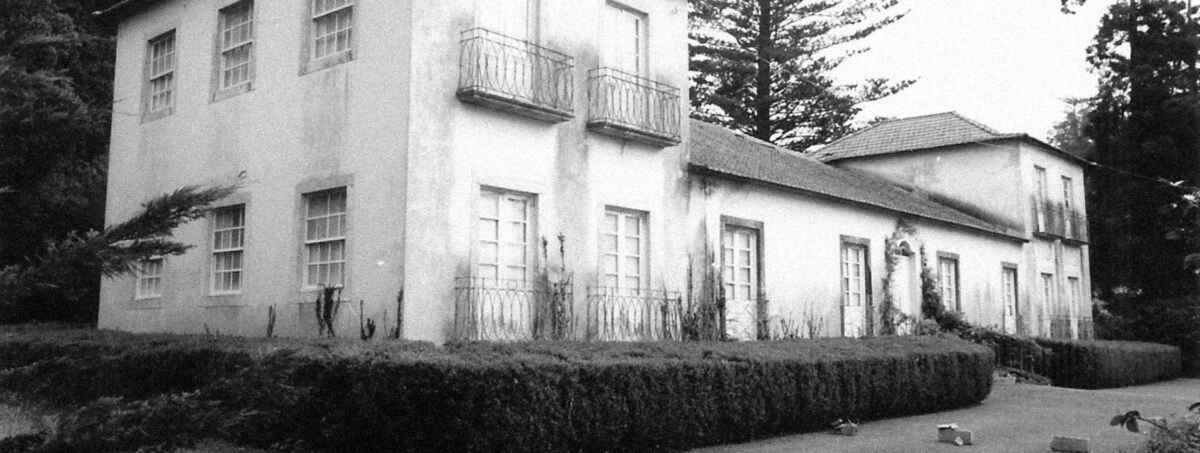
In 1801, João José Xavier de Carvalhal Esmeraldo Bettencourt Vasconcelos Sá Machado da Câmara Leme (1778-1837; sorry for the short name!) was on a hunting trip with friends when they saw a beautiful spot on a hill owned by a blacksmith. Mr. Carvalhal spontaneously bought out the blacksmith and decided to build Casa Velha do Palheiro Ferreiro (the blacksmith’s thatched, old cottage).
In 1804, a Quinta with a farm and a garden was laid out with the help of a French landscape architect. At that early time already, many rare trees and plants where brought to the garden by sailing ships, notably from Brazil. Casa Velha mainly served as a summer house and hunting lodge. Mr. Carvalhal employed over 200 men to maintain his property.
In 1811, John Blandy, the first member of the British Blandy family to set foot on the island of Madeira. He arrived in Funchal as a quartermaster with the British garrison during the Napoleonic wars. He later returned and established a flourishing wine trade. At the time, the Blandys had no connection to Casa Velha.
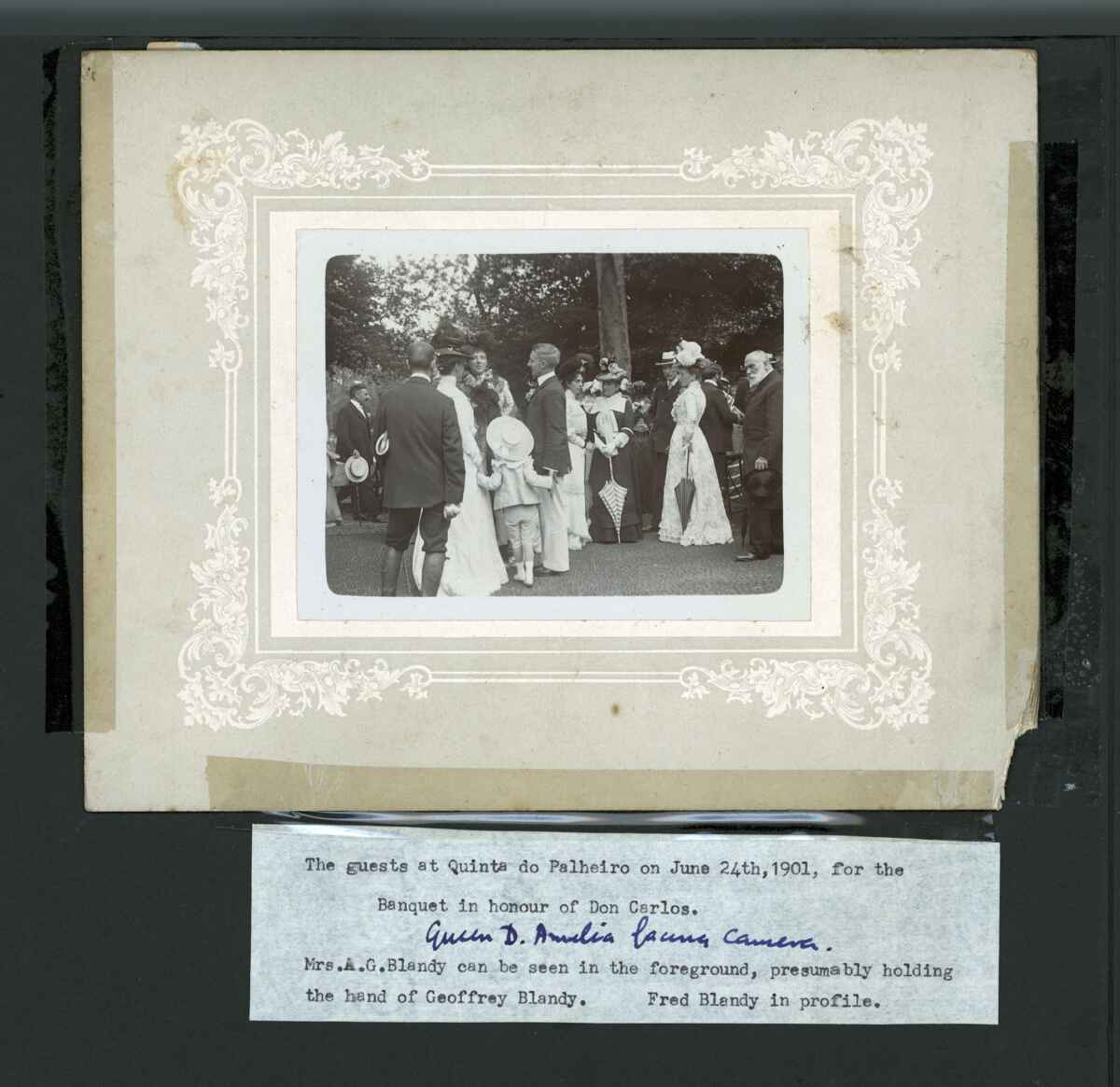
Guests at Quinta do Palheiro on June 24, 1901 for the banquet in honor of the Portuguese King Don Carlos and Queen D. Amélia, together with members of the Blandy family. Photo copyright: Palheiro Nature Estate / Casa Velha do Palheiro.
In 1817, the owner of Casa Velha, Mr. Carvalhal, entertained the Archduchess Leopoldina of Austria, who was on her way to Brazil to marry the countries first king, Dom Pedro ), the son of the Portuguese King João VI. During this period, frogs and deer were brought to Madeira. Casa Velha subsequently mainly became a hunting lodge. In the 1820s, two additional wings were added. The entrance was painted with frescos of acorn branches, the Conde’s emblem. An octagonal, neo-classical temple was built on a hill above the Quinta; a stylized version of the building serves as today’s Palheiro Estate emblem. The Conde also built a chapel in a simple baroque style. The camellias with their strong scent became the garden’s signature feature.
In 1828, João Carvalhal left the island during the Miguelite wars and took exile in London; his sympathies were on the liberal side. He returned in 1834 and, a year later, received the title 1st Condé de Carvalhal da Lombada from the King of Portugal. The following year, he was made Mayor or Civil Governor of Funchal.
After his death in 1837, the title and the property of the unmarried man fell to his nephew António Leandro (1831-1888; we skip the rest of his name), who was only 6 at the time. The 2nd Count of Carvalhal did not only have a wife, to children and a French mistress for whom he built a house nearby, he enjoyed life in Paris (with a racing stable), Madrid and London, bought a yacht and held wild parties at Casa Velha; at one occasion, ladies were invited on the condition that they would wear nothing but high heels and jewelry. Among his many guests was the Infante, later Dom Luis of Portugal. Unfortunately, the 2nd Count of Carvalhal dilapidated the family’s fortune and died in 1888. For a brief time, Casa Velha, already in a poor state, was used as a hotel.
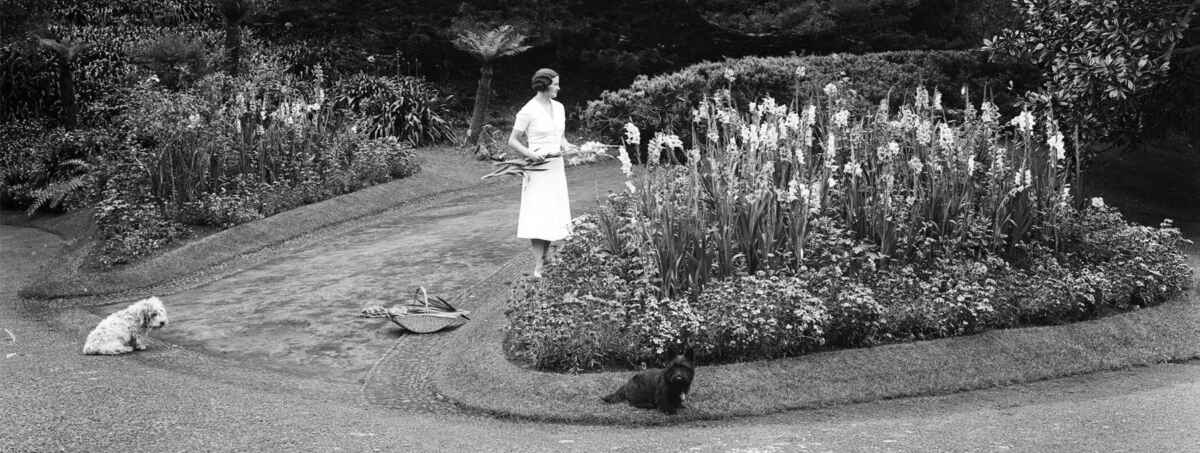
Mildred Blandy in the worldfamous Palheiro Gardens. Photo copyright: Palheiro Nature Estate / Casa Velha do Palheiro.
John Burden Blandy aka JBB (1841-1912), the head of the Blandy wine lodges in Funchal, bought the Palheiro property at public auction in 1885 and, in 1891, built the present family residence North of Palheiro Gardens; at JBB’s time, the house was used as a summer residence. The new owner further developed the gardens.
In 1901, John Burden Blandy received the Portuguese King Dom Carlos and his wife Queen Donna Maria Amélia at Palheiro Estate for a picnic banquet with many guests. In the afternoon, King Carlos and John Burden Blandy played tennis together with friends, immortalized on a photograph hanging in the hotel entrance.
Unfortunately, Dom Carlos was incompetent and extremely extravagant and wasteful, which contributed to Portugal’s bankruptcy during his reign from 1892 to 1902. Incidentally, Dom Carlos was shot dead together with his heir, Prince Luis Filipe, while riding back to their Lisbon Palace in open carriage in 1908, an event similar to the one which led to World War I in 1914.
After JBB’s death, the property passed to John Ernest Blandy (1866-1930), who was married to the American Elinor. They continued to run the estate and improve the gardens. Palheiro then passed to Graham Blandy (1904-1972) and his wife Mildred (1905-1984). However, from 1910 onwards, Casa Velha itself remained mainly empty and virtually abandoned. Only the back rooms were inhabited and the cellars continued to store fruit and other farm items.
Elsewhere, the life of the Blandy’s continued to flourish. In 1950, they received Winston Churchill at Reid’s Palace, which they owned for some 40 years until after the first Gulf War. At Reid’s, Churchill wrote the fourth volume of his war memoirs, The Hinge of Fate (Amazon.com, Amazon.co.uk). Because Churchill liked to sleep in a double bed and Reid’s had none, John Reeder Blandy lent the former wartime leader his own! Churchill occupied the ground-floor suite once occupied by First World War leader Lloyd George.
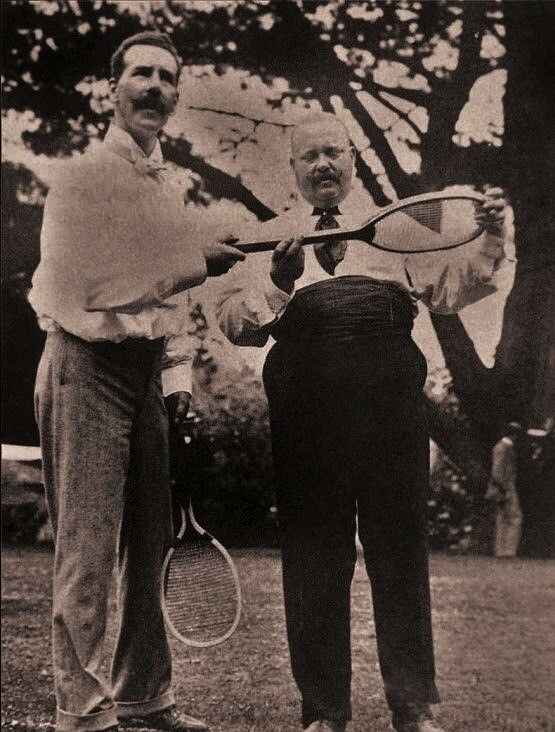
John Burden Blandy playing tennis with King Don Carlos of Portugal, 1901. Photo copyright: Palheiro Nature Estate / Casa Velha do Palheiro.

The elegant Hotel Casa Velha today, quite different from the un-restored Quinta. Photo copyright: Palheiro Nature Estate / Casa Velha do Palheiro.
During a famous dinner at Reid’s, Churchill opened the best Madeira on the wine list, a 1792 Blandy Solera, which had sailed to Napoleon’s exile in St. Helena. Never opened and never paid for by the former emperor, the bottles returned to Blandy’s in Madeira, much to the delight of Sir Winston Churchill.
In the summer of 1984, a good century after John Burden Blandy had acquired the Palheiro Estate, Adam and Christina Blandy moved to the manor house built by their ancestor. They thought about a possible future for the farmland property. Finally, they came up with the idea of a golf course, designed by the American Cabell Robinson on the former farm and wood land. With the help of public funds, the golf course opened in 1993.
A year later, the former Portuguese president Mario Soares visited the dilapidated Casa Velha and drew attention to the possibility of funds to restore the historic patrimony of Portugal. With the help of subsidies, the old hunting lodge and former cottage of the blacksmith was restored in 1996 and was opened as a country house hotel on April 18, 1997 by the President of the Regional Government of Madeira, Dr. Alberto João Jardim: the five-star Hotel Casa Velha do Palheiro.
For further information, read the book (the main source for this article) by Marcus Binney: The Blandy’s of Madeira 1811-2011. Francis Lincoln Publishers, 2011, 224 pages. Order the book from Amazon.co.uk, Amazon.com, Amazon.de, Amazon.fr.
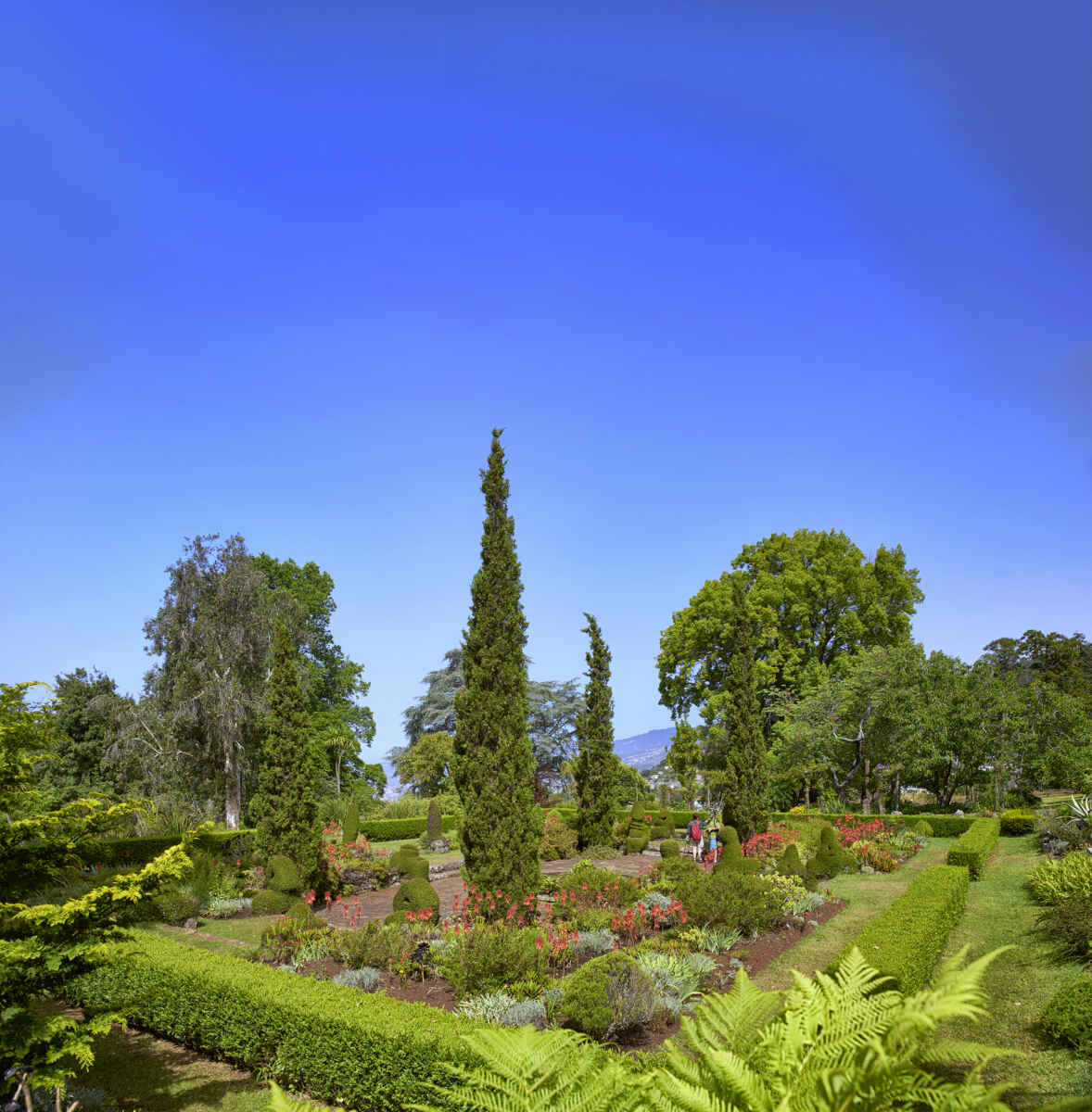
Palheiro Gardens today. Photo copyright: Palheiro Nature Estate / Casa Velha do Palheiro.

Casa Velha before the restoration. Palheiro Nature Estate / Casa Velha do Palheiro.
Hotel history written on April 6, 2012. Added separately from the rest of the old article to our newly designed pages on October 7, 2020 at 09:51 Madeira time. With historic photos added for the first time. Last update on October 12, 2020 at 12:42 Madeira time.